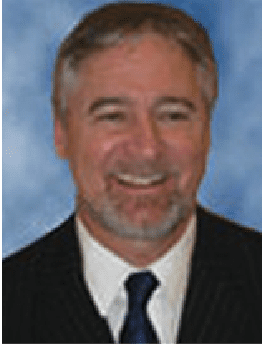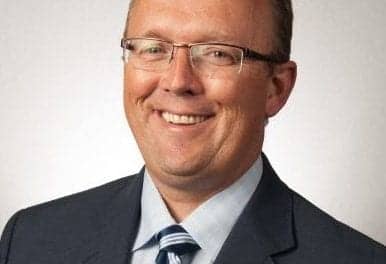My coauthors in a paper1 some 20 years ago were graciously indulgent enough to allow me to begin our technical paper with a very non-technical story from Sufi folklore. Perhaps the reader will permit a re-telling and recognize the relevance.
Four travelers—a Persian, a Turk, an Arab and a Greek—arrived at a village hungry and penniless. They had an argument about how to spend the last few meager coins among them. The Persian desired Angur, the Turk wanted Uzum, the Arab made a plea for Inab, and the Greek argued for Stafil. After a lengthy debate, it became clear that each wanted to invest in the same thing—grapes. Hence, the multi-syllabic word, Anguruzuminabstafil, found its way into the vocabulary of Sufi lore.
The cited paper relates to the outcome of several years of deliberations towards standardizing the terms for Real Ear testing of hearing aid performance. The present commentary also addresses word usage within our profession.
Our relatively small industry of hearing professionals, including engineers, sales and support staff, use terminology that is distinct from common lay terms. Like every other profession, we utilize some industry-specific or proprietary words such as Air/Bone gap, DI, multi-channel NR, AGC Threshold, REIG, SNR, to mention just a few.
Relatively recently, the term ‘PSAP’ has been introduced and circulated within our profession to represent a personal sound amplification product. These terms have regrettably led to consumer confusion. This unfortunate outcome is perhaps the reverse effect of the FDA’s “Guidance” paper’s intent to clarify product distinctions. An illustrative example recently appeared in Forbes2 magazine.
In that Forbes article, the author reported how clever he had thought he was to have saved thousands of dollars by making an online “hearing aid” purchase. Unfortunately, he had not purchased the product he’d intended. The fact is, a PSAP is not necessarily a hearing aid. While the product’s marketing, packaging, and description were strictly in compliance with the PSAP nomenclature of the FDA, nowhere did the website, product materials or instruction booklet say “Hearing Aid.”
This may be only one of many instances where an intelligent lay consumer, a non-participant in the hearing products industry other than to make purchases, chose a familiar term to help make their buying decision. Consumers have a history with the word ‘hearing aid,’ but not with the newer acronym. For further evidence of the potential for confusion, the reader might discover that a Google search of PSAP will yield multiple references to ‘Public Safety Awareness Points.’
At the EUHA meeting in Hannover recently I learned from direct participants in the matter of a recent ruling by the French governing committee of audiology and hearing aid professionals. They separated hearing aids from PSAPs on the basis of Gain. If the amplification product has more than 20 dB of gain, it is designated a hearing aid and treated as a medical product. Devices with 20 dB or less are declared to be PSAPs. By extension of this questionable premise, numerous common consumer products, including MP players, car radios, amplified telephones, and Assistive Listening Devices would appear to be medical in nature. Furthermore, a healthy male speaker is entirely capable of raising his voice from a whisper to a shout over a range in excess of 40 dB3. This would seem to result in a kind of pseudo-hearing aid experience for the person at the other end of the conversation.
“Gain” is not only one of those problematic technical terms discussed earlier, on a purely audiological basis, it seems to be a very bad choice for separating these products. It is output sound pressure level (SPL) that should be the focus, if such a distinction between consumer audio and “audiological” amplification is factually required. The 20 dB of gain in a PSAP (French or otherwise) may potentially deliver a dangerous 110 dB output when used in environments with 90 dB ambient sounds! Likewise, even moderate to severe hearing aid users may need only a relatively low gain, perhaps 10 or 15 dB for high-level speech inputs. The auditory system makes use of, and may be threatened by, sound pressure levels, not gain.
Meanwhile, the FDA proposal to make the distinction between hearing aids versus PSAPs on the basis of where and/or how a consumer chooses to use the product, as indicated in the November 2013 revision of their Draft Guidance, may result in a new Sufi type of story. While clarification is keenly needed for both consumers and professionals, what seems to be happening instead is increased potential for confusion over both distinctions and terminology.
The historic declaration by government fiat in the 1970s, which designated hearing aids as “medical devices,” did not alter the primary motivation for most consumers to use them. Consumers use hearing aids to lessen their communication challenges, not to mitigate diseases.
Whether consistent with ‘regulations’ or not, hearing aids have always been a kind of short-range telecom invention as per usage. As every hearing professional knows, otopathologic damage is not reversed by the use of amplification through hearing aids, though it may be worsened, regardless of the label, by amplification with higher outputs. On the other hand, hearing aids do work quite well to mitigate vital communication disturbances of an acoustical nature. Regrettably, evidence for hearing aids’ hoped for effects on cognitive decline has not been established.
Perhaps one of the most seminal and widely recognized cultural stories around this topic of lexical clarity recalls the alleged Tower of Babel, generally understood as an attempt to explain the many regional languages and dialects in early civilizations. Presently Papua New Guinea appears to be the world’s most linguistically variegated region. More than 800 languages are spoken there among the seven million residents. Within the relatively smaller number of professionals in the hearing health industry, a consolidation of terms would be in everyone’s best interest.
In the Signals and Systems course that I teach for Salus University’s International AuD Bridge Program, we spend a fair amount of time discussing Semiotics, the scientific study of symbols and symbolic conveyances from ‘sender’ to ‘receiver’ and the cause of failure and degradations of that transfer.
Of course, one of the crucial elements is the need for unambiguous agreement of signs. Note that the word ‘sign’ shows up in larger words like ‘assignment’ and ‘designation.’ However, the simple act of a committee ‘designating,’ or a government body ‘assigning’ a specific label, such as PSAP or “hearing aid” to a form or type of electronic device, does not make it so for the participants in the much larger symbol-sharing community. The type of confusion this produces is akin to countless situations of “She said _____,” but he misheard it as “___ ____ ”.
Of all professions, it seems ironic that the one dedicated to the science of hearing contributes to confusion in communication by utilizing misleading acronyms and terminology.
Sadly, the situation may only get worse as the trajectory of technology advances. Consumer audio companies are expected to place an ever-increasing number of multi-purpose devices on, or in, ears in the near future. Head-worn (wearable) devices are among the hottest new products being developed by many companies such as Samsung, Olympus, Microsoft, Oakley, Sony, Intel, and Apple, as well as a dozen or more startups.
I have been waiting for some months for the delivery of my Kickstarter-funded DASH devices from the German company Bragi. These are designed to wirelessly deliver high quality audio and telephone signals, keep track of physical fitness parameters such as blood O2 levels and BP, and track various physical activities. External and internal MEMS microphones allow the device to be acoustically transparent and conceivably ‘kitted out’ with all the properties of a hearing aid. But it is ‘officially’ not a hearing aid per their probably cautious FAQs (http://www.bragi.com). Hence, we might soon see a variation of the anguruzuminabstafil story bearing a name something like mulitpurposeinearthingy. Ear level ‘chameleon devices’5 are likely to go from being newly arrived curiosity items to ‘gotta have’ products for various purposes in the next few years.
Words do matter, but they can also scatter, as in scattering universal understanding. It might be noteworthy in these increasingly globally connected times that in Mandarin the word for “confusion” combines the characters for “tongue” with one for “mystery.” Is it inevitable that attempts by our industry to sharpen its vocabulary should result in confusion for the much larger body of consumers?
References
- Schweitzer, HC, Sullivan R, Beck L, Cole W. On developing a consensus for real-ear hearing instrument terms. Hear Instruments. 1990;41, 28, 46
- Karlgaard R. Health care: Sound of Innovation. August 20, 2014. Available at: http://www.forbes.com/sites/richkarlgaard/2014/08/20/health-care-sound-of-innovation/
- Ferrand C. Speech Science. Boston. Allyn & Bacon;2001.
- Regulatory Requirements for Hearing Aid Devices and Personal Sound Amplification Products: Guidance for Industry and FDA Staff (2009, February 25). Available at: http://www.fda.gov/downloads/ MedicalDevices/DeviceRegulationandGuidance/GuidanceDocuments/ucm127091.pdf
- Schweitzer HC. Future trends in amplification. In: Valente M, Hosford-Dunn H, Roeser R, eds. Audiologic Treatment. New York :Thieme;2000:715-728.
H. Christopher Schweitzer, PhD, is Chief of Technical Audiology for IMH Corp, in Downers Grove, Ill, and owner of Family Hearing Centers of Colorado.






